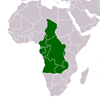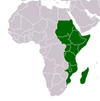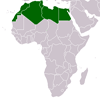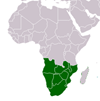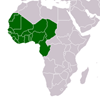Rubber and the environment: proceeding of the joint workshop of the United Nations Conference on Trade and Development and the International Rubber Study Group
Rubber and the environment: proceeding of the joint workshop of the United Nations Conference on Trade and Development and the International Rubber Study Group
This is the second joint UNCTAD/IRSG Workshop on the opportunities for internalizing environmental costs and benefits in prices of rubber and rubber goods, which was held as part of the International Rubber Forum in Liverpool, UK, in June 1997, under the chairmanship of Dr. Ulrich HOFFMANN of the Trade, Environment and Development Section of the UNCTAD secretariat. UNCCTAD has concluded that natural rubber stands to gain from internalization of environmental costs in the entire rubber industry. The economic variables prevailing in the natural rubber market favour internalization: the supply elasticity is below unity, and the price elasticity for demand is estimated to be significantly less than one. Furthermore, the 70% international market share of Thailand, Indonesia and Malaysia is coupled with intermediate export dependence as rubber accounts for only 3.5% of their total exports. Unilateral attempts to pass on environmental cost increases appear feasible, although concerted action among the three main producers is desirable and cooperation with producers and manufactures of synthetic rubber is necessary. The elastomer market is dominated by renewable natural rubber and non renewable fossil-fuel-derived synthetic rubber: In some applications they are substitutes and in others, compliments. Tyre production accounts for over 50% of elastomer consumption and 60% of natural rubber consumption. The current share of natural rubber in total tyre production is unlikely to change much. Rubber cannot realistically be replaced in tyre production, nor can tyres themselves be replaced by a different product. Many general rubber products also appear very difficult to displace or replace. Phase one of UNCTAD’s progrmme on internalization prospects in the rubber economy emphasizes identification and measurement of malign and benign environmental effects in the production, manufacturing, and consumption of synthetic will explore the applicability of various internalization instruments at the country and regional level, considering the scope and the best ways for reflecting internalized environmental costs in international rubber prices. Phase 3 will focus on capacity building to implement full-cost pricing in countries that may want to make progress. The UNCTAD/IRSG Workshops provide the opportunity to inform and involve enhance transparency among all market agents.
CITATION: United Nations (UN). Rubber and the environment: proceeding of the joint workshop of the United Nations Conference on Trade and Development and the International Rubber Study Group . New York : UN , 1999. - Available at: https://library.au.int/rubber-and-environment-proceeding-joint-workshop-united-nations-conference-trade-and-development-a-3

